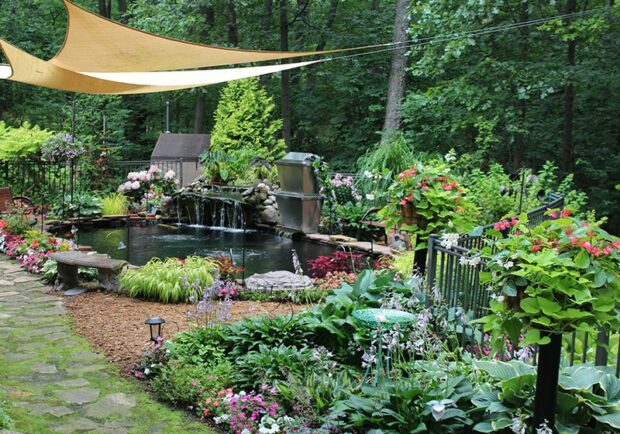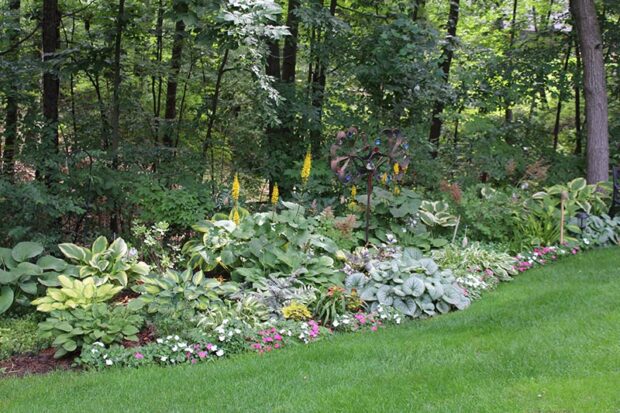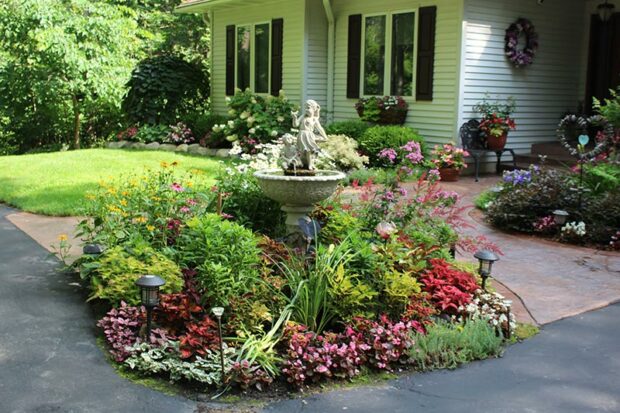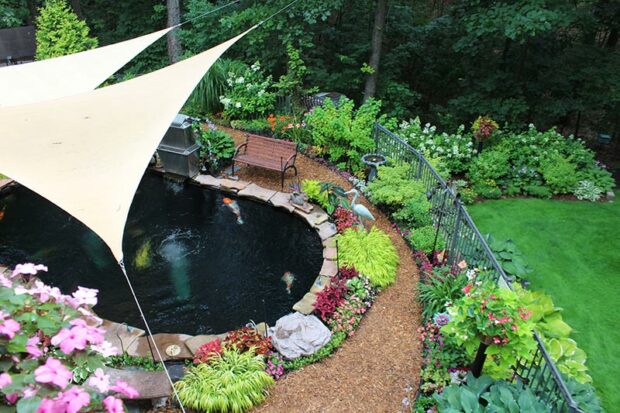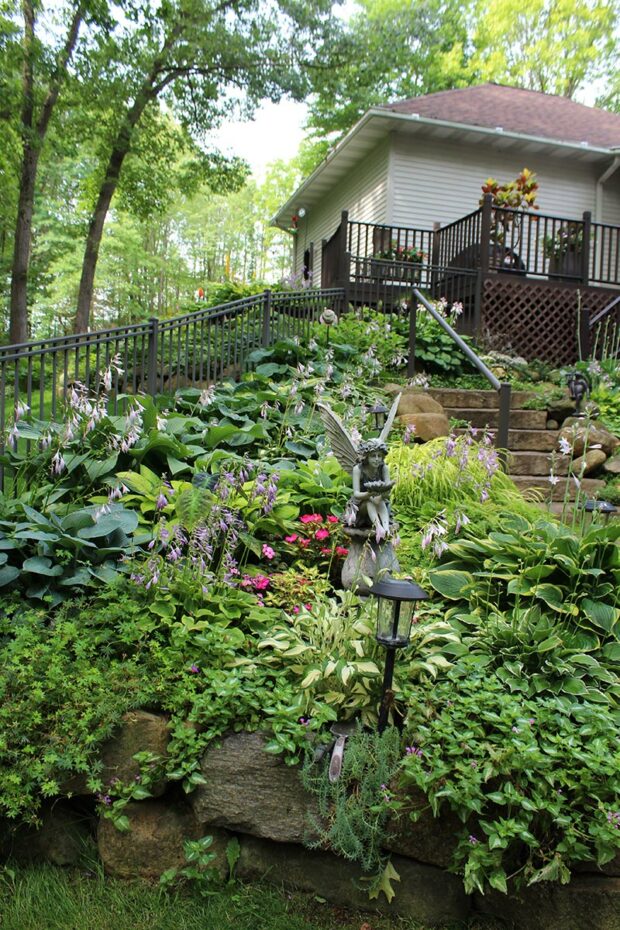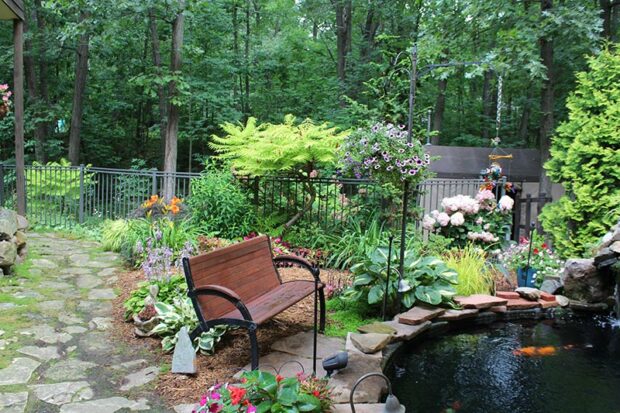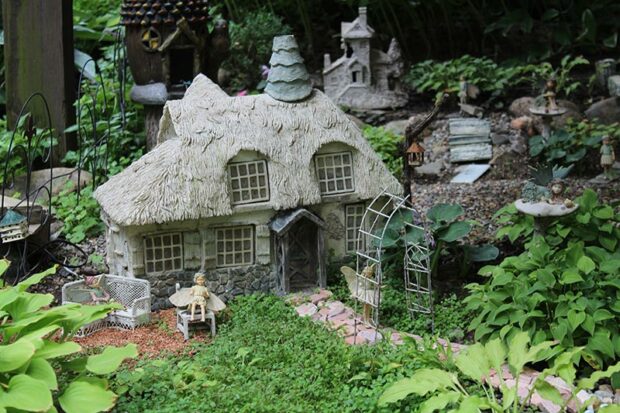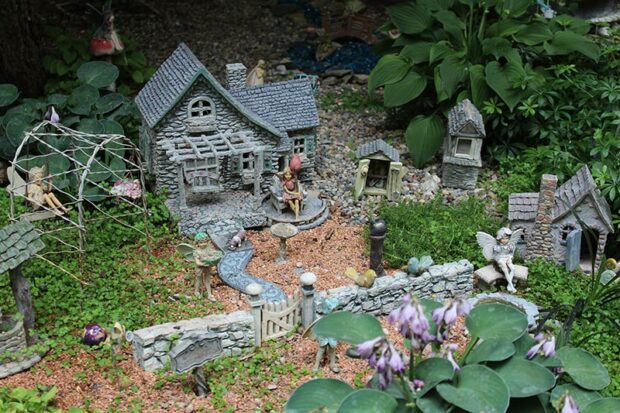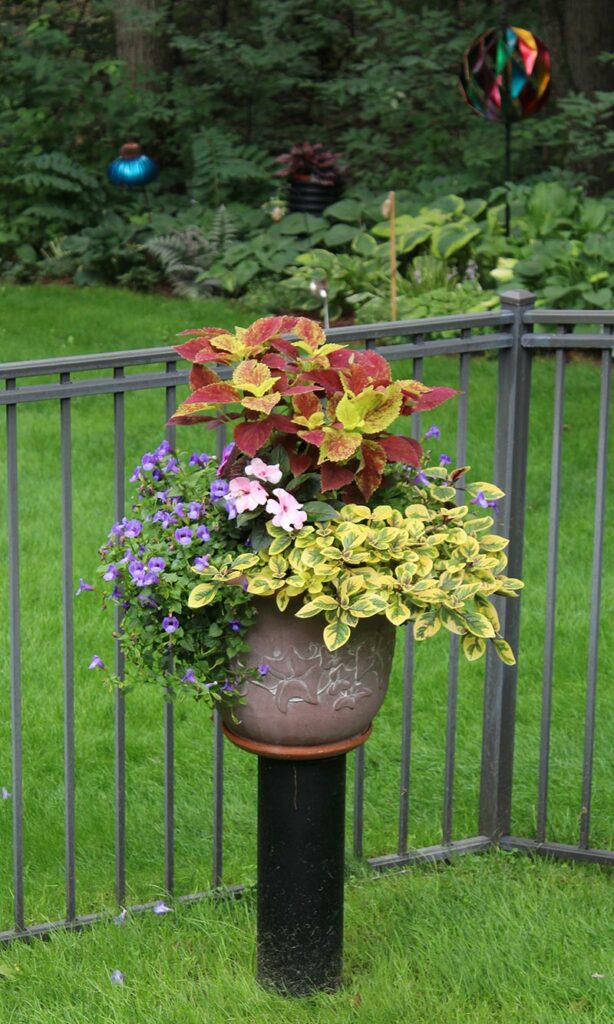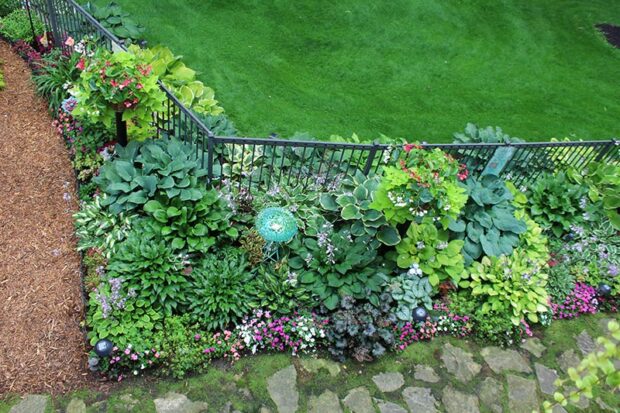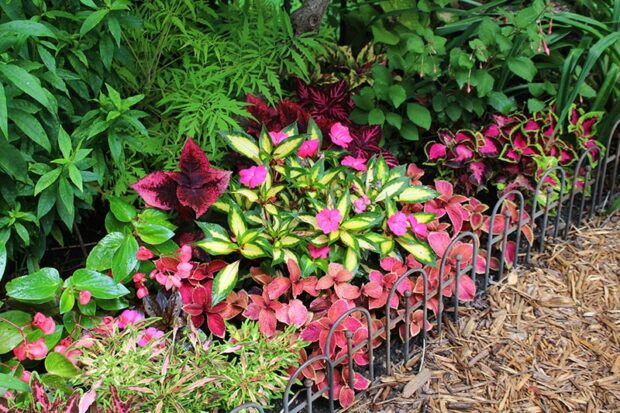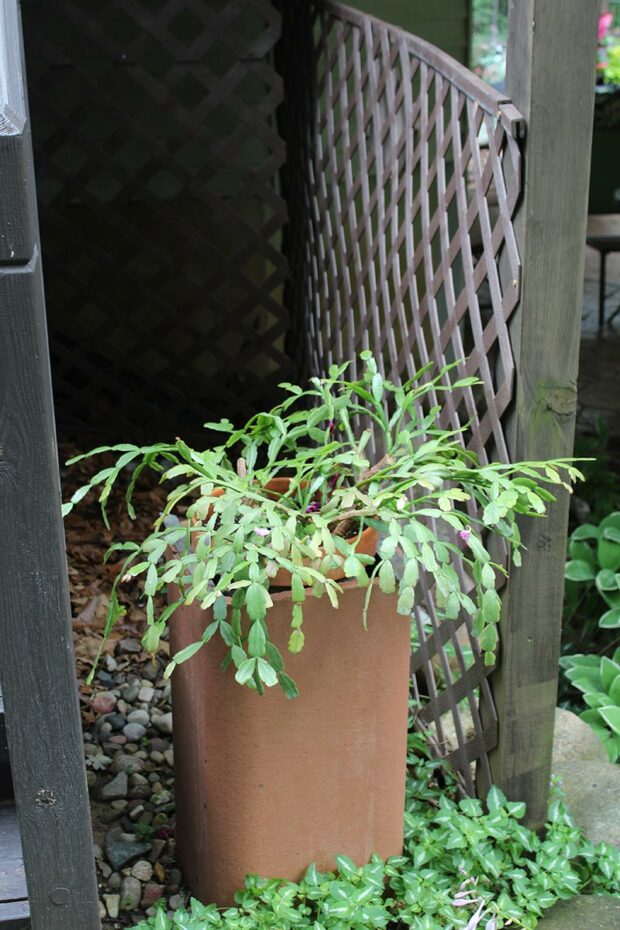Lynn O’Shaughnessy’s breathtaking garden layout is loaded with native plants and is a haven for pollinators
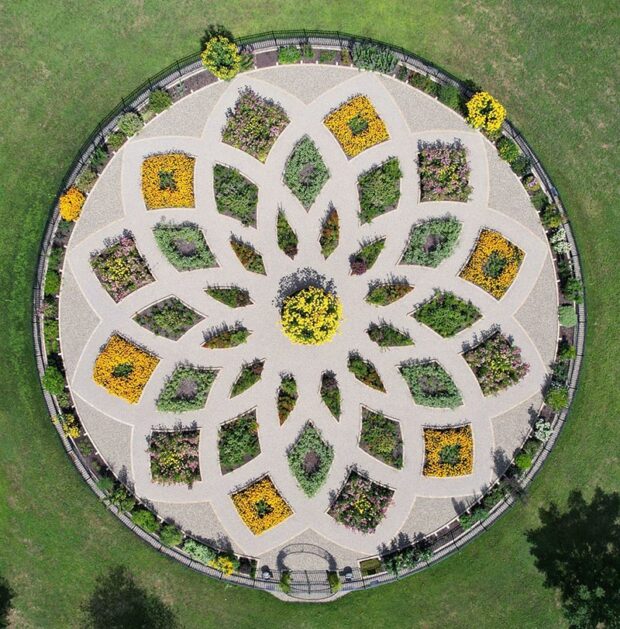
by Lisa Steinkopf
If a plane flew over Lynn O’Shaughnessy’s property, I’m sure it would circle and fly over again, just to see the spectacle. Lynn’s circle garden is beautiful from ground level, but is stunning from above. After initially seeing Lynn’s garden on a tour, we later met to talk about what inspired her to build the circle garden and why she decided to plant only native plants.
The very first time I attended a garden walk at Lynn’s was before the circle garden was built. Her sunny gardens were bursting with color and her hosta garden in the woods was exceptional. But the shade got deeper and the deer hungrier, so she decided to concentrate on a new garden. (That said, she also is revamping the hosta area into a native planting.)
The second time I toured her property, the hosta area was roped off, while her perennial beds and the new circle garden were the stars of the show. Lynn was giving a circle garden tour to a few attendees. I took photos and listened from afar, and could feel the pure joy and love of the garden radiating from Lynn as she described the new space. She has a passion for native plants and has created an exceptional garden to demonstrate that native plants don’t have to look like roadside weeds. The gorgeous garden is both well planned and well executed.
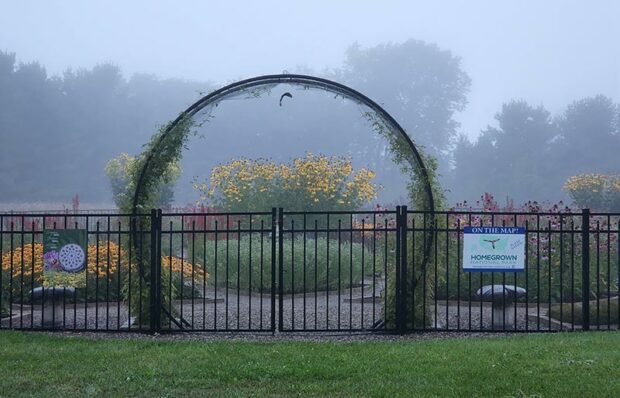
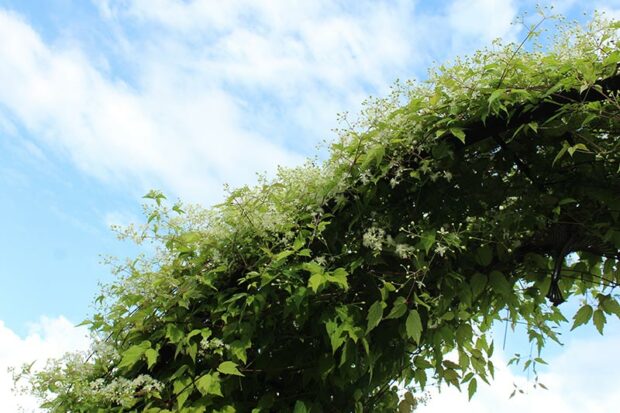
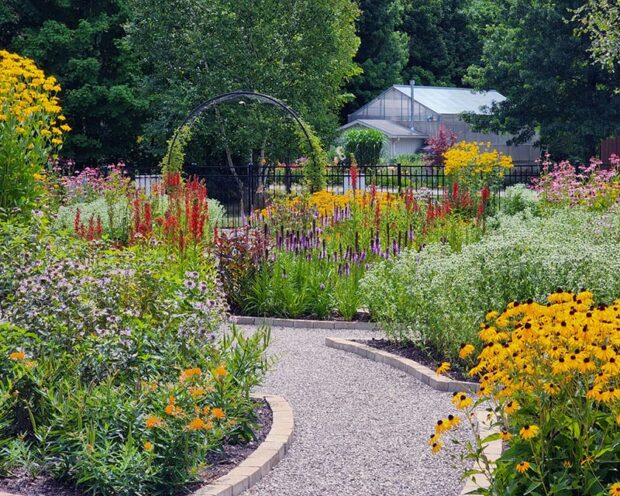
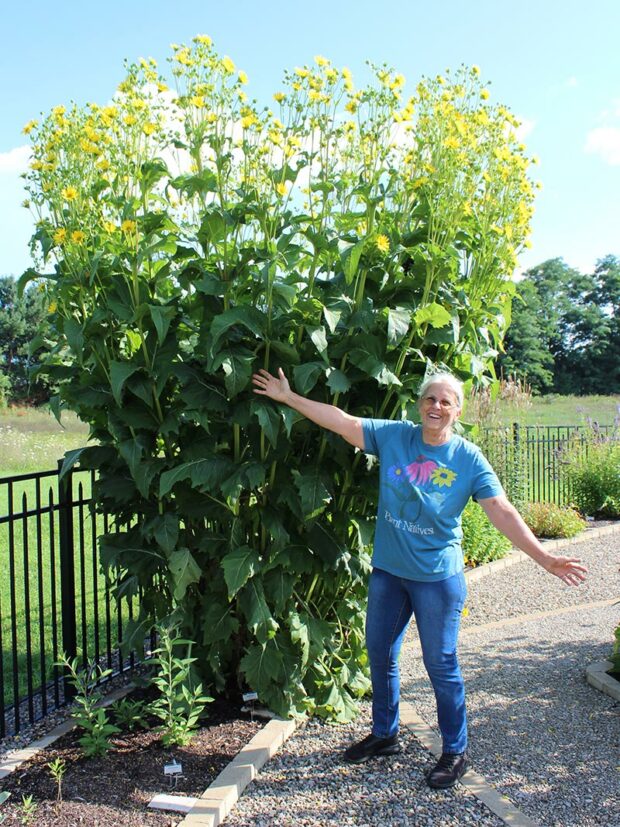
Garden conception
What brought about her interest in native plants? In 2018, she investigated how her garden could become a monarch waystation, and began adding plants that monarchs would love. She started seeing other butterflies as well. The new plants she had incorportated were natives, and she was seeing more butterflies than ever. She decided to start gardening with a purpose—to support the pollinators.
In the winter of 2019, a friend showed her an aerial photo of the lavender labyrinth at Cherry Point Farm in Shelby, Michigan. The center was a circular garden with a 12-point geometric design. Instantly, she knew this would be the garden design for her native plants.
She researched the layout and found it was a sacred geometry design known as torus vesica piscis. Using the design as the center, she created a vision board with pictures of the many native plants she wanted to incorporate into the design.
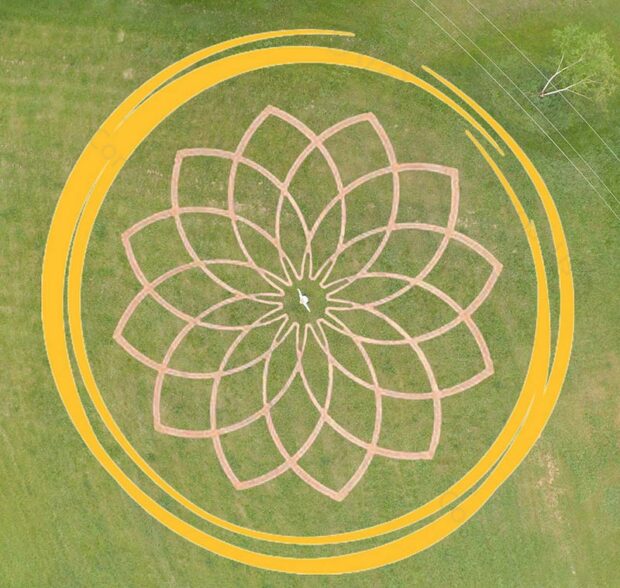
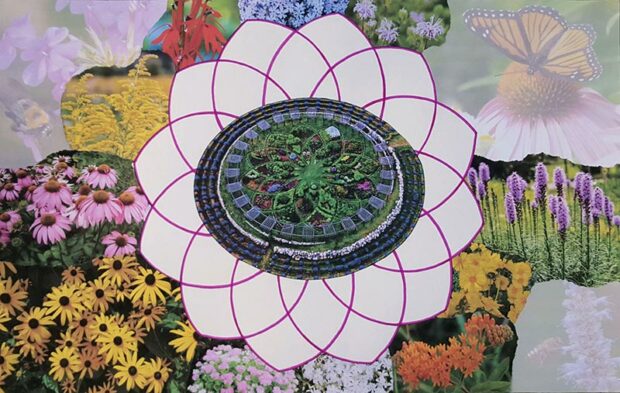
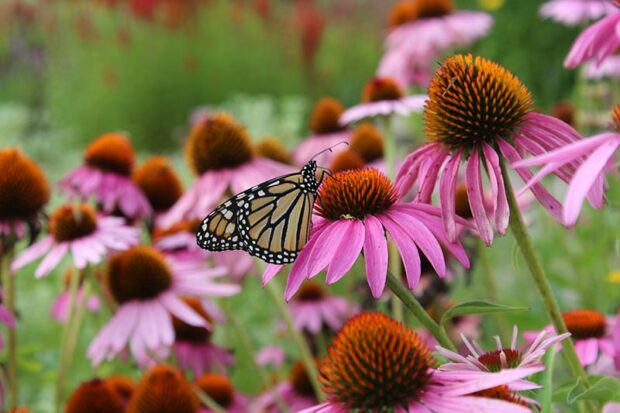
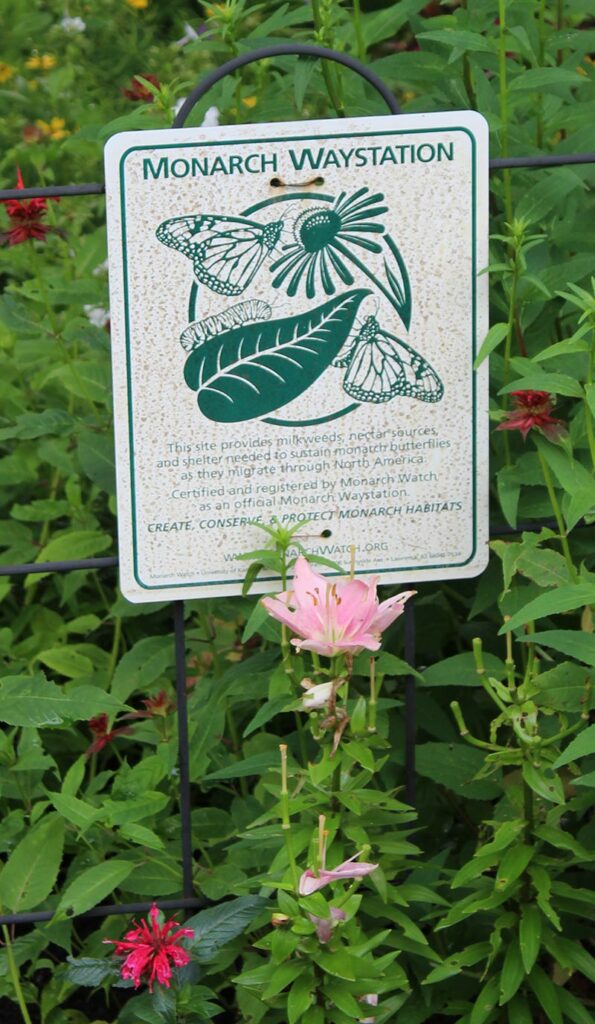
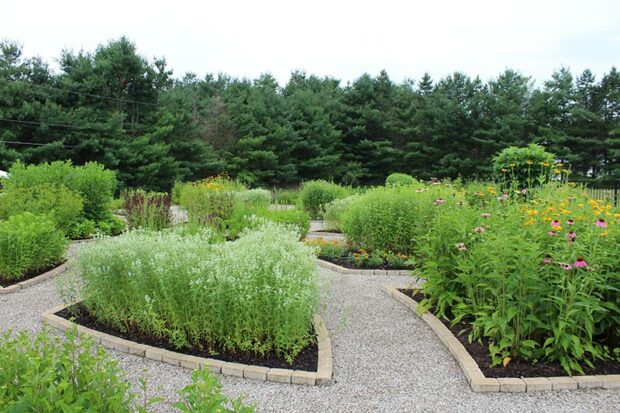
Building the garden
Lynn created the garden independently, except for the ground preparation, fencing, and irrigation. The garden is 100 feet wide and the fencing keeps the deer, turkeys, and rabbits out. The robins are still a problem, scratching and throwing soil onto the walkways. Lynn lives on 10 acres, so there are plenty of critters to keep out of the garden.
The contractors removed eight inches of topsoil and replaced it with sandy loam. They also installed an irrigation system. The rest was done with Lynn’s muscle power using a shovel and wheelbarrow. The walkways between the beds are gravel instead of grass so there would be no need to mow. Lynn chose brick edging to keep it neat and clean (the robins don’t understand that part).
It took her three months to get the garden ready to start planting the next year. The next spring, she worked for two more months and the circle garden was finished. She purchased some plants from native plant nurseries, and also grew many things, sowing seeds in her greenhouse. One of the helpful garden features for visitors is that every plant has a sign with its common and botanical name. The entire garden consists of perennials, except for two shrubs: shrubby St. John’s wort (Hypericum prolificum) and New Jersey tea (Ceanothus americanus). She has flowers blooming from April through the fall and everything is cut down to six inches in late fall.
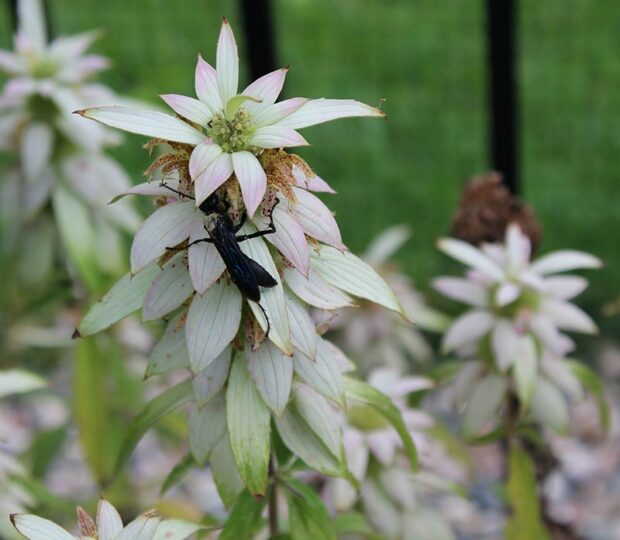
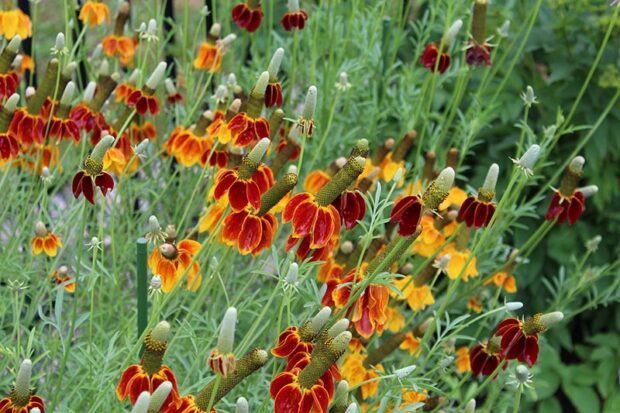
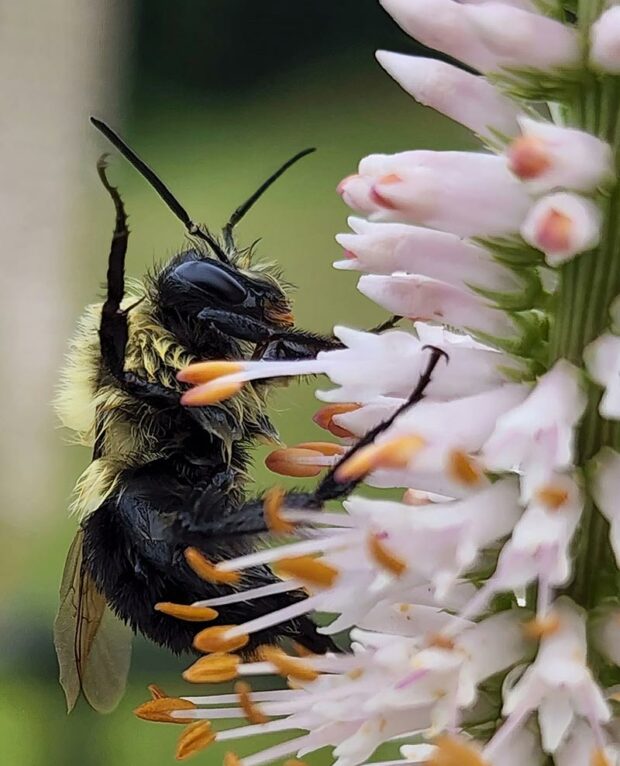
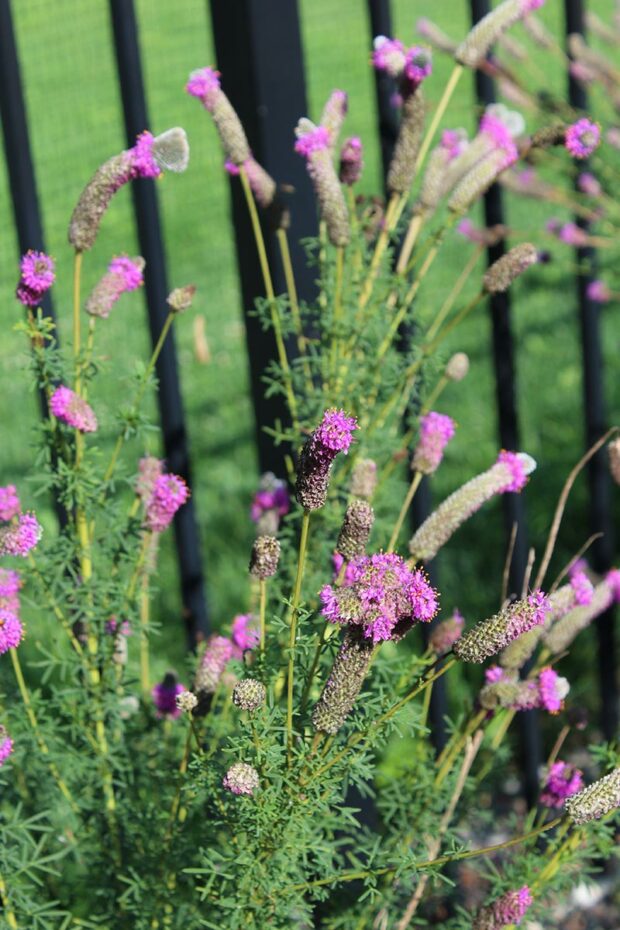
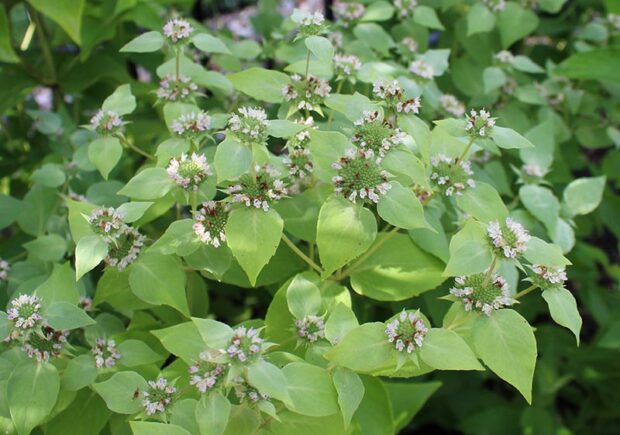
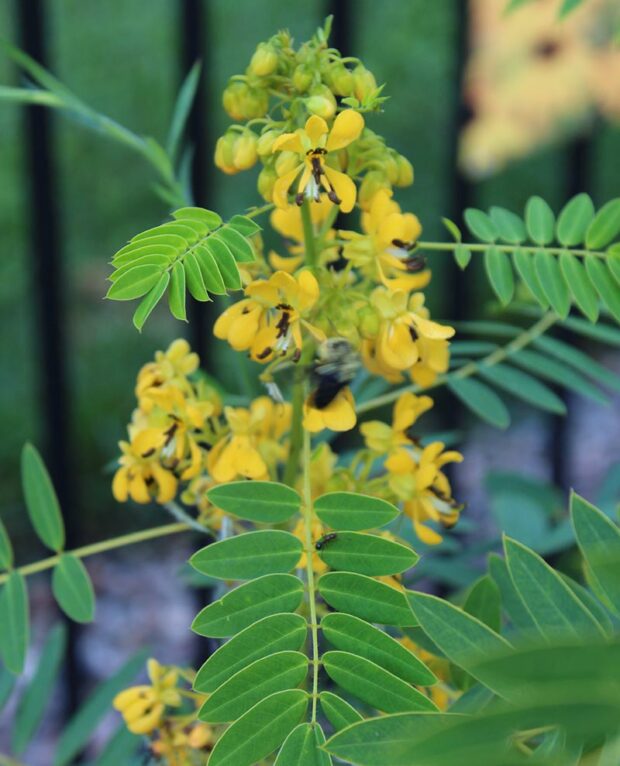
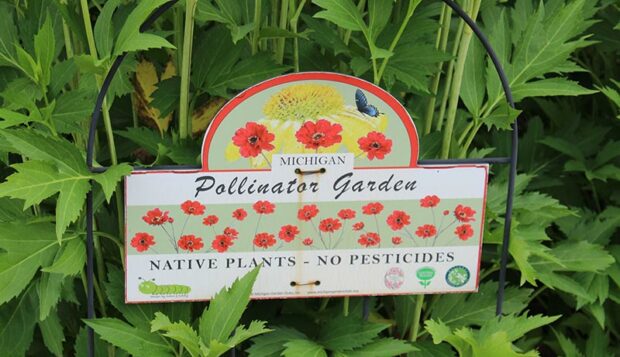
Pollinator lessons
This native garden is grown for pollinators. I saw so many as I walked through the garden with Lynn. She knew them all. How did she learn to identify them? She discovered the website www.bugguide.net, created by Iowa University. You can send in your “bug” picture, and they will do their best to identify it.
As we walked around the garden, here are a few things I learned from Lynn, in no particular order:
- Bunnies don’t eat bee balm (Monarda).
- Wool carder bees use lamb’s ear wool for their nests.
- The clustered mountain mint (Pycnanthemum muticum) has the most diverse selection of pollinators. Lynn photo-documented 26 different pollinators on it while it was blooming.
- Golden Alexander (Zizia aurea) is a host plant for the black swallowtail, a resident in every Michigan county.
- Lynn’s favorite flower is bottle gentian (Gentiana andrewsii) because the blue flowers never fully open. In the late summer, our native bumblebee pollinates it by pushing its way in. She likes this plant’s interesting story.
- White turtlehead (Chelone glabra) is the host of the Baltimore checkerspot butterfly. The caterpillars overwinter in the leaf litter and become butterflies in the spring. This is unusual, as most butterflies don’t overwinter as larvae. This is a good reason to leave your flower beds messy in the fall.
- I saw many different insects and many looked like bees to me. Yet, many were flies. How do you tell the difference? Flies have short antennae, two wings, and big eyes. Bees, on the other hand, have longer antennae, four wings, and small, oblong eyes.
- Northern blazing star (Liatris) is the biggest butterfly magnet when blooming. The other plants are ignored when this is in bloom. Lynn took a photo with 11 monarchs in the picture at one time.
- Pearly everlasting (Anaphalis margaritacea) is the host for the American lady butterfly. Lynn has seen 40 to 50 caterpillars on the plant, and they completely defoliated it. The plant recovered and bloomed 4 to 5 weeks later.
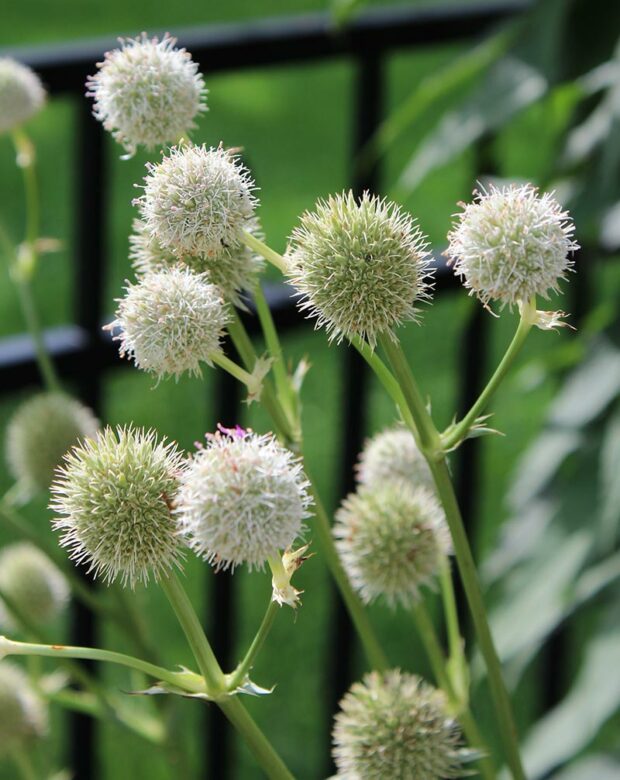
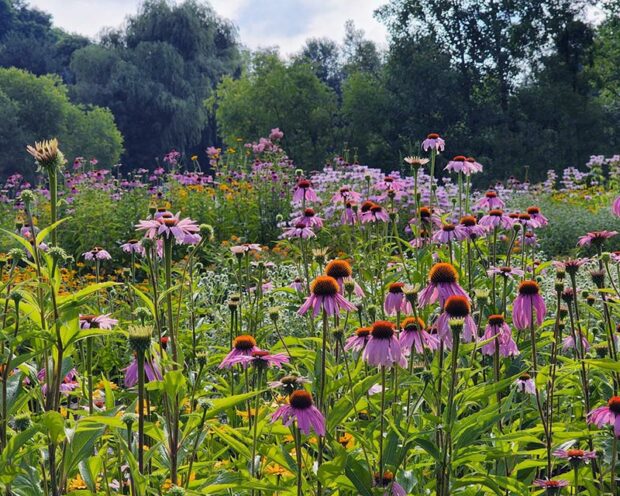
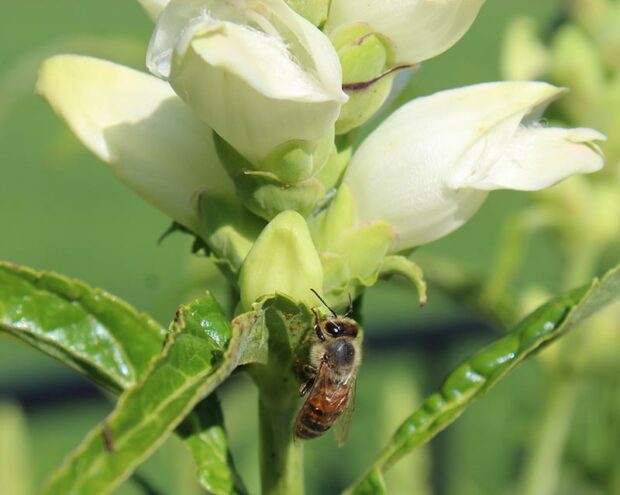

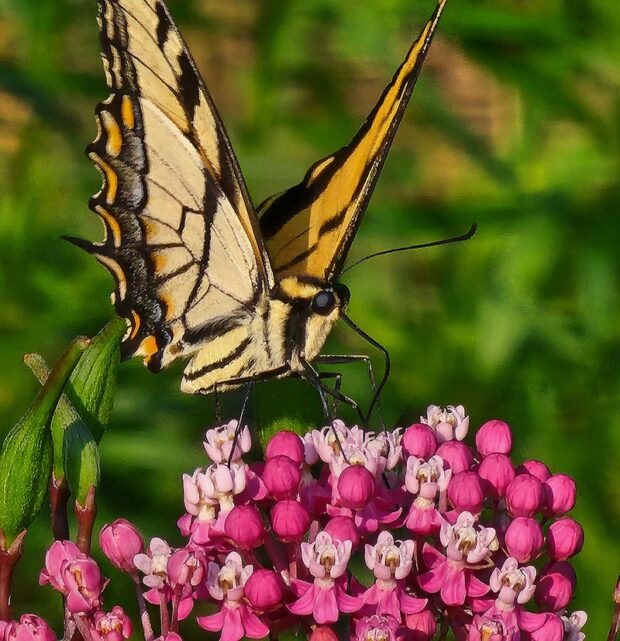

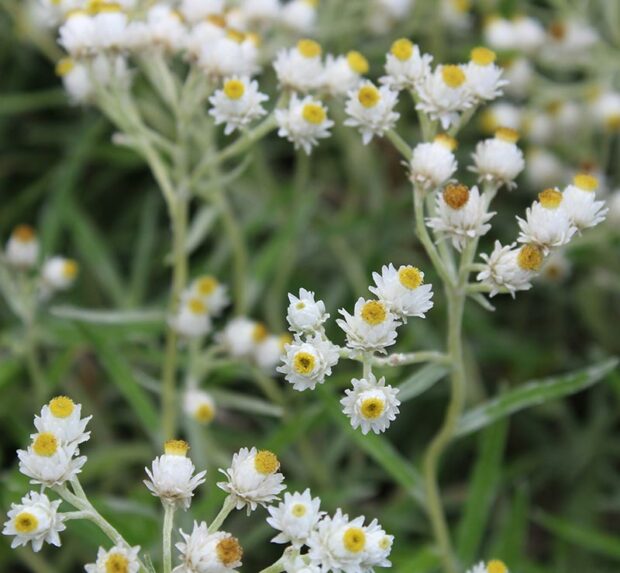
In its fourth year, the garden looked amazing and seemed much more established than a four-year-old garden. Lynn takes a drone photo every Friday to record the progression of growth and flowering. She hosts garden clubs and other groups, giving them tours of the garden (by appointment only). I learned so much from Lynn about pollinators and native plants. If you have a chance to tour her garden, don’t miss it. It is an amazingly beautiful place, buzzing with life.
Lisa Steinkopf is The Houseplant Guru (www.thehouseplantguru.com).

